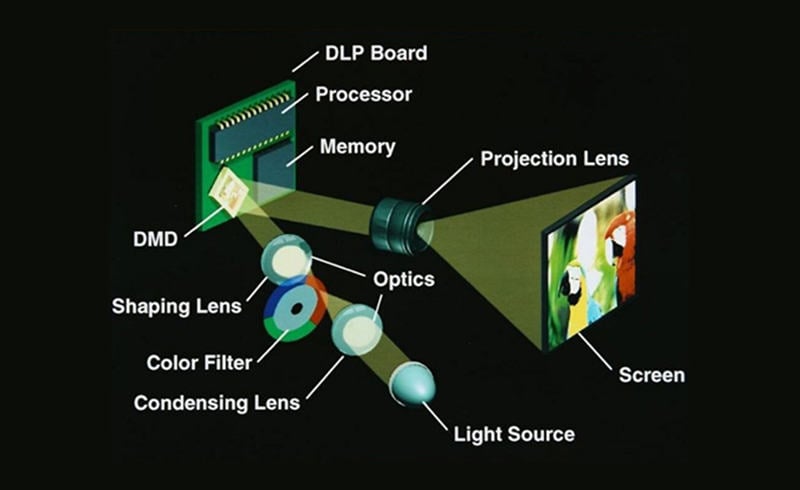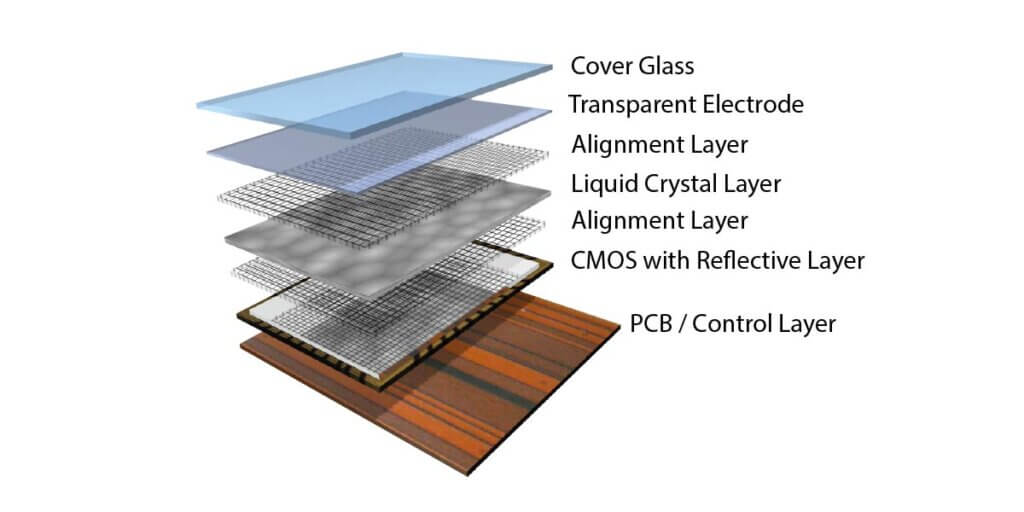With Huawei Hisilicon set to release a laser projector utilizing LCoS technology, it begs the question: how do these technologies differ from the mainstream DLP, 3LCD, and LCD technologies? Let’s delve into the distinctions between DLP, LCoS, 3LCD, and LCD technologies.

DLP Technology
DLP, short for Digital Light Processing, relies on a Digital Micromirror Device (DMD) chip to manipulate mirrors to produce images. The DMD chip, situated within the optical engine, comprises thousands of tiny mirrors, each capable of tilting to reflect light. These mirrors can modulate light digitally, allowing for precise image projection.

Advantages of DLP Technology:
- Mechanical operation ensures high controllability of mirrors, resulting in high native contrast.
- Utilizes a reflective principle, enabling simpler implementation of high aperture ratios and compact optical systems, leading to more compact devices.
- DMD chips, being semiconductor-based, are less susceptible to heat, allowing for enclosed light paths to mitigate dust interference.
LCoS Technology

LCoS, Liquid Crystal on Silicon, shares similarities with LCD technology but uses an LCoS panel to control light projection. The LCoS panel, situated between a CMOS chip and a transparent glass substrate, modulates light by altering the orientation of liquid crystals. Light passes through the glass substrate and the liquid crystal material, reflecting off the CMOS chip’s polished surface.
Advantages of LCoS Technology:
- LCoS utilizes silicon wafer CMOS substrates, offering high electron mobility and facilitating high-resolution panels.
- Being reflective, LCoS can achieve up to 40% light utilization, reducing power consumption and generating higher brightness.
- Simplified optical engine components lead to lower production costs.
3LCD Technology
3LCD technology employs a prism to split white light from a source into red, green, and blue components, which then pass through independent liquid crystal panels. These panels modulate the intensity of light passing through each pixel, generating images that converge and project onto a screen.

Advantages of 3LCD Technology:
- Enhanced color brightness and contrast.
- Shorter imaging chains with fewer steps and larger LCD panel chip sizes result in higher theoretical light utilization efficiency.
- Real-time processing of three primary colors mitigates rainbow artifacts and flickering issues.
LCD Technology

LCD, or Liquid Crystal Display, uses liquid crystals sandwiched between two glass panels to manipulate light. By applying electric currents to the liquid crystals, their orientation changes, allowing light to pass through and create images.
Advantages of LCD Technology:
- Cost-effectiveness and affordability.
Understanding the differences between these technologies can aid consumers in selecting the most suitable option for their needs, whether it’s for home entertainment, business presentations, or educational purposes.
Related Reading:




